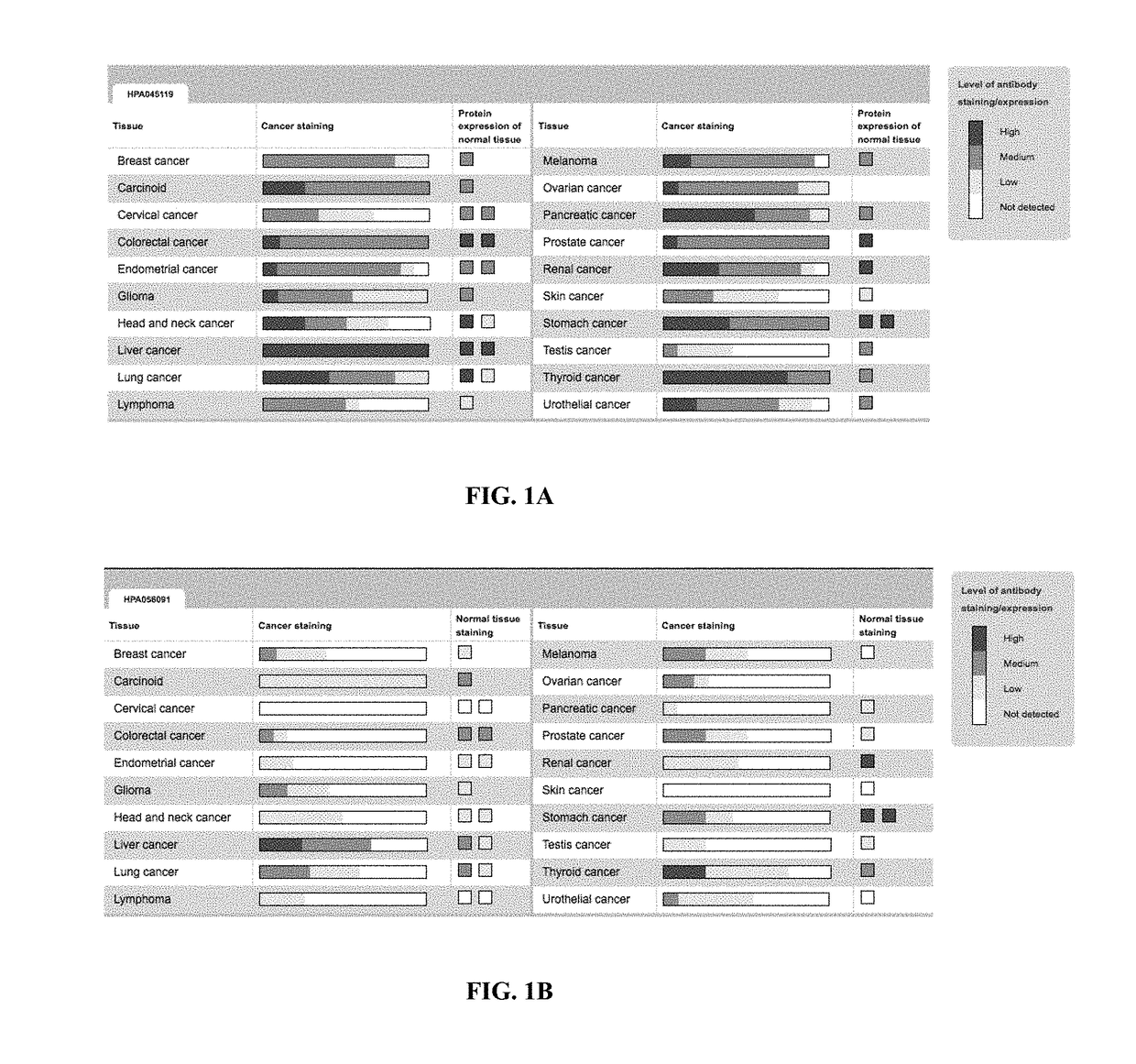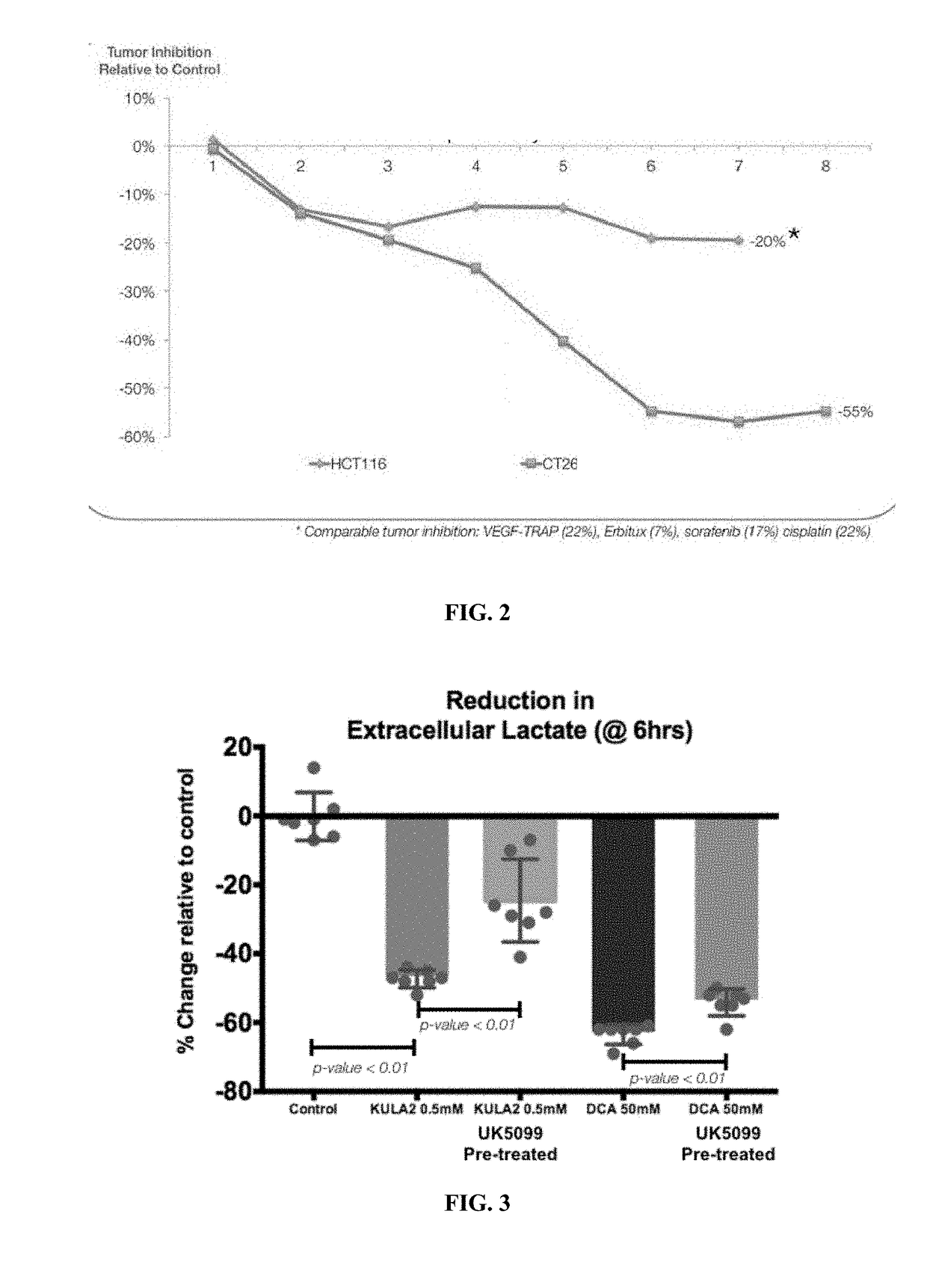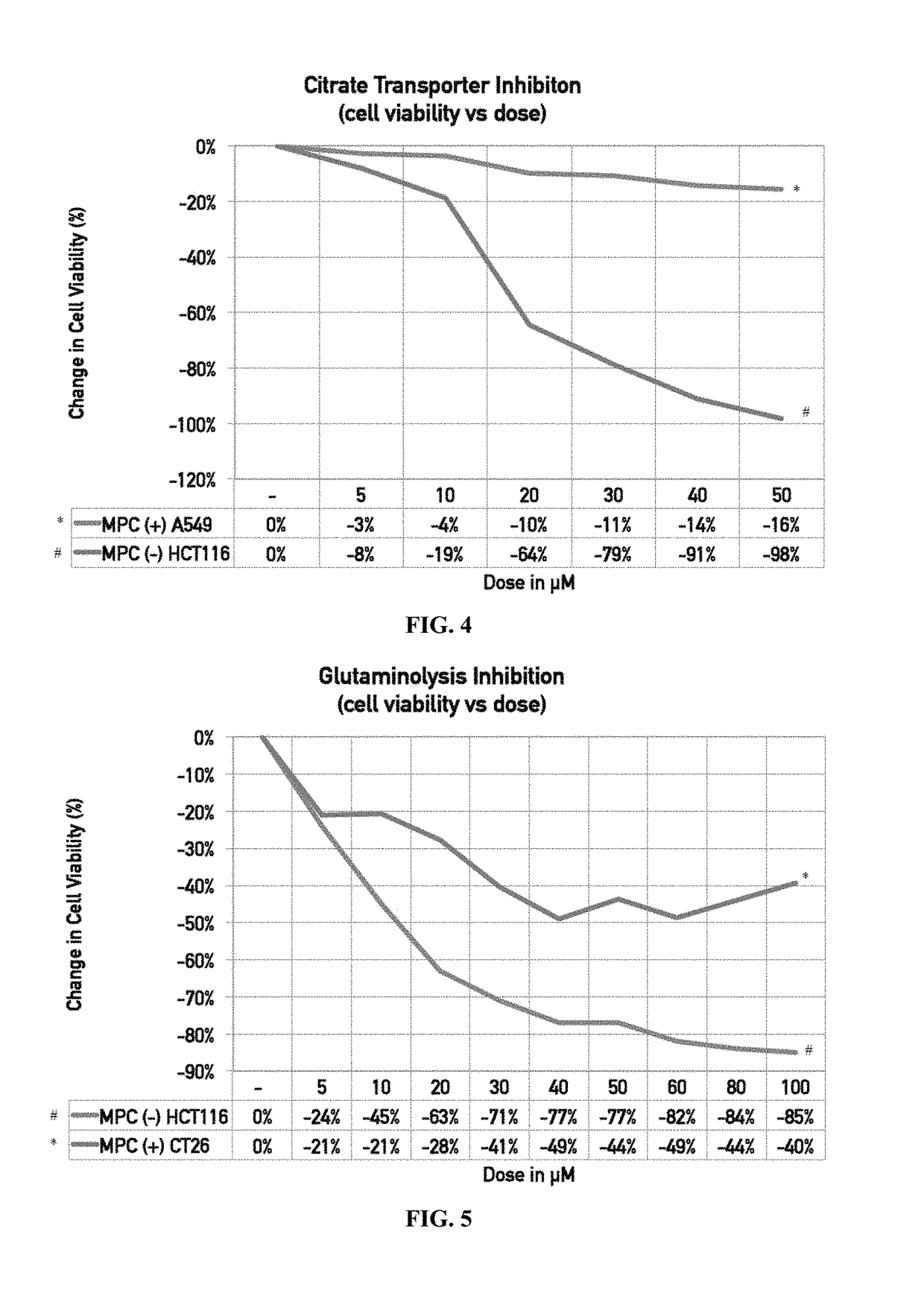Methods of selecting subjects for treatment with metabolic modulators
- Summary
- Abstract
- Description
- Claims
- Application Information
AI Technical Summary
Benefits of technology
Problems solved by technology
Method used
Image
Examples
example 1
Efficacy of PDK Inhibitor Positively Correlates with MPC Expression Levels
[0225]Materials and Methods
[0226]KULA2 refers to a dichloroacetate (DCA) analogue targeted to the mitochondria with a lipophilic triphenylphosphonium (TPP) cation moiety ((Pathak R K et al., ACS Chem. Biol., 9 (5) 1178-1187 (2014), (Pathak R K et al., ACS Chem. Biol., 9 (5) 1178-1187 (2014), and WO / 2015 / 002996).
[0227]HCT116 represents the MPC null group, having minimal to no expression of MPC1 or MPC2. CT26 is the MPC+ group. MPC levels were verified via western blotting or otherwise known (see, e.g., Schell, et al., Molecular Cell, 56:400-413 (2014)).
[0228]In both models HCT116 and CT26 the mice (between 8-10 per arm) were dosed with KULA2 via i.p. injection and vehicle, HCT116 tumors at a dose of 20 mg / kg, and CT26 tumors at a dose of 18 mg / kg. Dosing schedule in both cases was 5 days on, 2 days off for the duration of the study.
[0229]Results
[0230]Experiments were designed to determine if MPC expression corr...
example 2
Inhibition of MPC1 and MPC2 with a Known MPC Blocker Lowers the Lactate Reduction Normally Seen with PDK Inhibitors
[0231]Materials and Methods
[0232]A549 cells were pre-treated for 16 hrs with the MPC inhibitor UK5099 and then subsequently treated with the test articles for 6 hrs; extracellular lactate was then measured. Dichloroacetate (DCA) and KULA2, a dichloroacetate (DCA) analogue targeted to the mitochondria with a lipophilic triphenylphosphonium (TPP) cation moiety, were used ((Pathak R K et al., ACS Chem. Biol., 9 (5) 1178-1187 (2014), (Pathak R K et al., ACS Chem. Biol., 9 (5) 1178-1187 (2014), and WO / 2015 / 002996). DCA is dosed at 50 mM and KULA2 is dosed at 500 μM.
[0233]Results
[0234]Experiments were designed to determine if the presence or absence (inhibition) of MPC affects the level of extracellular lactate following treatment with a PDK inhibitor. The results in FIG. 3 show that inhibition of MPC1 and MPC2 with UK5099, a known MPC blocker, lowers the lactate reduction no...
example 3
Inhibition of Citrate Transporter Reduces Cell Viability in Cells with Reduced Expression of MPC
[0235]Materials and Methods
[0236]MPC-positive A549 cells (*) and MPC-negative HCT116 cells (#) were treated with various doses (μM) of a citrate transporter inhibitor.
[0237]Results
[0238]The results are illustrated in FIG. 4, a line graph showing the change in cell viability (%) of MPC-positive A549 cells (*) and MPC-negative HCT116 cells (#) following treatment with increasing doses (μM) of the citrate transporter inhibitor. The results indicate that MPC status can be used to predict efficacy (responders) of treatment with citrate transport inhibitors (or anything in that path including citrate lysate and acyl-coa synthase). More particularly, negative / low / mutant (loss of function) MPC means that citrate pathway inhibition will be successful. If MPC is positive / high / mutant (gain of function) there might be much less of a therapeutic effect.
PUM
| Property | Measurement | Unit |
|---|---|---|
| Fraction | aaaaa | aaaaa |
| Fraction | aaaaa | aaaaa |
| Fraction | aaaaa | aaaaa |
Abstract
Description
Claims
Application Information
 Login to View More
Login to View More - R&D
- Intellectual Property
- Life Sciences
- Materials
- Tech Scout
- Unparalleled Data Quality
- Higher Quality Content
- 60% Fewer Hallucinations
Browse by: Latest US Patents, China's latest patents, Technical Efficacy Thesaurus, Application Domain, Technology Topic, Popular Technical Reports.
© 2025 PatSnap. All rights reserved.Legal|Privacy policy|Modern Slavery Act Transparency Statement|Sitemap|About US| Contact US: help@patsnap.com



